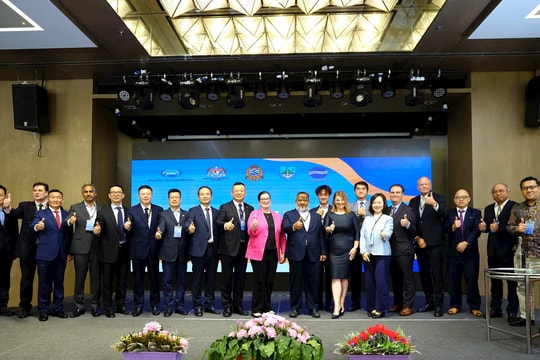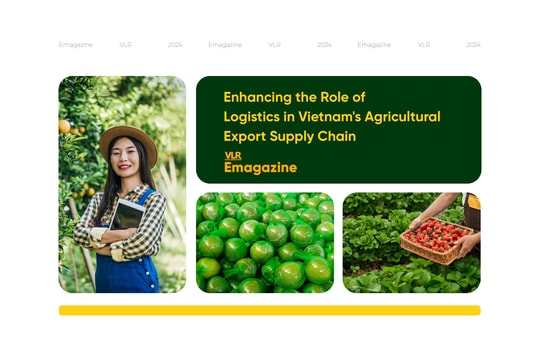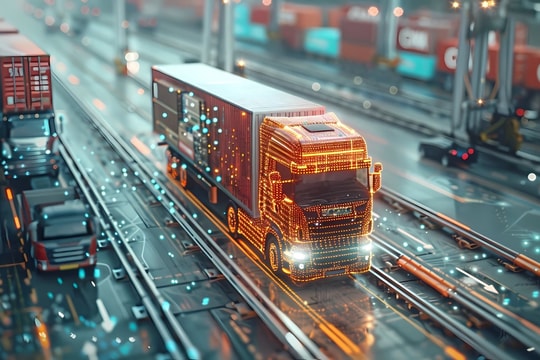
Digitalization and Automation in Logistics
Christopher Fuss, Global Head of DHL SmartSolutions IoT, highlights the rise of IoT in logistics, stating, “IoT is becoming one of the most impactful trends in supply chains, providing end-to-end transparency. This technology not only enhances tracking but also improves inventory management and combats counterfeiting” (DHL, 2024). This underscores IoT’s central role in improving supply chain efficiency and transparency across the APAC region".
With rapid technological advancements, digitalization and automation are now integral to the supply chain and logistics sectors in Asia-Pacific. Companies are investing heavily in artificial intelligence (AI), Internet of Things (IoT), and automated warehousing systems to enhance the efficiency and accuracy of goods handling. IoT technology supports real-time tracking of goods, minimizing delays and improving information accuracy. Implementing modern technology not only optimizes costs but also significantly improves service quality in the region, meeting the increasing demands of customers in the digital era.
Julie Gerdeman, CEO of Everstream, spoke about the importance of AI technology and risk analysis in managing global supply chains at a recent conference hosted by DHL. She stated, “Everstream provides a comprehensive view from raw materials to finished products, combining AI-driven predictions with real-time analysis from a global network of partners. This enables companies to anticipate material shortages and potential disruptions - helping reduce costs and optimize on-time deliveries.” This highlights the trend toward enhanced flexibility and predictability in supply chains, especially relevant amid current uncertainties.
The insights provided by experts clearly reflect the trends of digitalization and risk management capabilities in supply chains, which are becoming strategic focal points to enhance flexibility and sustainability for the logistics sector in the Asia-Pacific region.


Green and Sustainable Logistics
Under pressure from consumers, investors, and governments, businesses are shifting towards sustainable supply chains with a focus on green logistics. Major companies like COSCO, DHL, and SF Express lead in reducing carbon emissions and adopting eco-friendly processes, such as fuel-efficient transportation and sustainable packaging. Countries such as Japan, Singapore, and South Korea are implementing policies to encourage green logistics, which not only reduces environmental impact but also brings economic benefits through process optimization and resource conservation.
Enhanced Flexibility in Supply Chains
Geopolitical instability and economic uncertainty necessitate that Asia-Pacific companies build more flexible and decentralized supply chains. The trends of “nearshoring” and “friendshoring” - relocating production and critical infrastructure to nearby, friendly nations - are growing to mitigate risks from global trade tensions and supply chain disruptions.
Vietnam has emerged as an attractive destination due to its affordable and dynamic workforce, alongside a rapidly growing logistics infrastructure. Large corporations, such as Apple, have begun shifting parts of their production from China to Southeast Asia, enhancing the region’s appeal as a new manufacturing hub on the global supply chain map.
Cross-Border Logistics and E-commerce Growth
E-commerce in the Asia-Pacific region is booming, especially in Southeast Asia. The rise of online shopping platforms is driving significant demand for cross-border logistics services, particularly last-mile delivery. In response, logistics companies are continuously expanding warehousing systems, transit hubs, and flexible distribution models. Notably, approximately 80% of e-commerce goods in Southeast Asia are imported from China and other regions, creating a significant impetus for logistics services development to support cross-border trade.
Asia-Pacific Logistics Market Growth
The logistics market in Asia-Pacific is projected to reach approximately USD 3.55 trillion in 2024, growing at an annual rate (CAGR) of about 5.13%, potentially reaching USD 4.56 trillion by 2029. China remains the largest logistics market in the region, followed by fast-growing economies like India, Vietnam, and Indonesia. These countries are increasing their investments in transportation infrastructure and logistics services to enhance their competitiveness and meet the rising demand from e-commerce.

The Asia-Pacific region’s supply chain and logistics trends reveal dynamic shifts towards flexible business models, green logistics, and the e-commerce boom. Geopolitical shifts and changing global consumer demands require companies to innovate and apply modern technologies to stay competitive. Investing in sustainable logistics and supply chains is not only a response to current challenges but also a cornerstone for building a long-term, sustainable economy in the region. Asia-Pacific is and will continue to be at the heart of global supply chain transformation, with the potential to lead the way in innovation and growth within the logistics sector.


.jpg)
.jpg)


.jpg)
.jpg)




.png)

.png)
.png)



.png)





